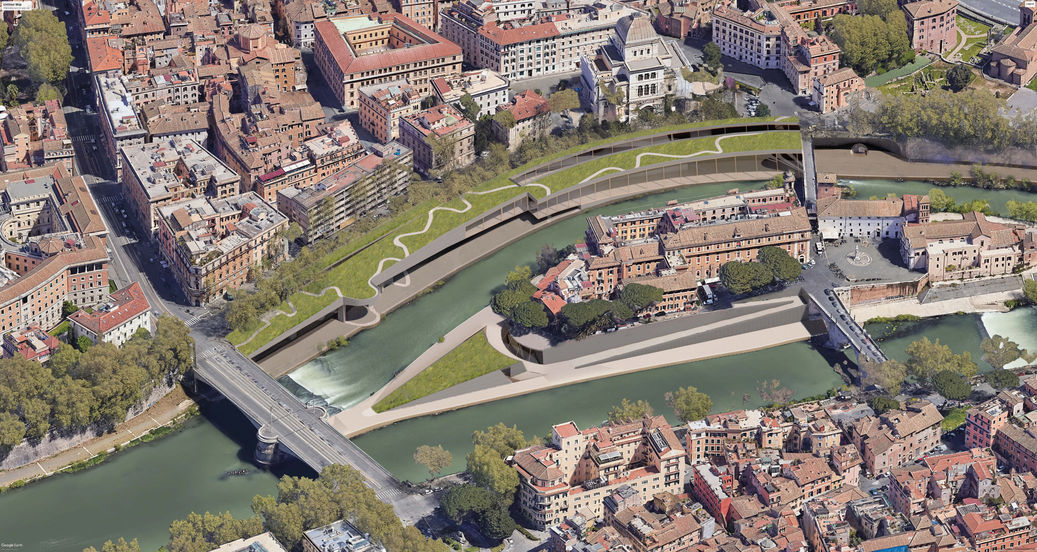ROME, ITALY
Undercurrents
SPRING 2024
HISTORY:
The historical relationship between Rome and the Tiber River, has been pivotal in shaping the city’s geography and community dynamics. Along Tiber Island, the northern bank of the Tiber River, where the Jewish Ghetto was later established, housed classical-era storehouses that supported the vibrant trading activities—a factor likely influencing the Jewish community’s initial settlement in the area. However, the location’s proximity to the river made it prone to frequent flooding, significantly impacting the health and living conditions of its predominantly Jewish working-class residents.
By 1555, the adverse effects of the river's floods had entrenched the area's reputation as marginal, prompting Pope Paul IV to sequester the Jewish population within the newly erected Ghetto walls, marking it as the sole area in Rome where Jews were permitted to live. Within its confines, some 7,000 Jews lived in extremely high density, occupying cramped, wood-structured apartments. This overcrowding, coupled with mandatory yellow markings for identification and stringent movement restrictions, highlighted the severe social and urban challenges faced by the Ghetto’s residents. The Ghetto’s conditions eventually prompted its razing and reconstruction in 1885 under public health and urban renewal initiatives, leading to a 20th-century block structure design. However, the area's trials persisted, with a devastating raid by the Gestapo in 1943 during World War II, resulting in the deportation of many Jews to concentration camps. In a contemporary act of remembrance, Stolpersteine—stumbling stones—were installed in 1995, marking the homes of Holocaust victims across Europe, including those from the Ghetto.
Civic Reparations // Transforming the Tiber River
Amidst this layered historical backdrop, the "Undercurrents" project along the Ghetto embankment and on Tiber Island seeks to reconnect Rome with the Tiber River’s multifaceted legacy.
Undercurrents reimagines the relationship between Rome and the Tiber River through a museum and theater complex that integrates into the embankment along Tiber Island. Besides the shift to a car-free city, the project is designed to be minimally disruptive to the existing site conditions, creating a new park space above without demolishing any buildings or public space.
Visitors gradually descend through the museum's galleries in the direction of the river's flow, moving downhill, embedded into the ground, before reaching the museum's turning point below water level and entering the temporary exhibition space. The entrance to this exhibition space is situated just below water level, allowing visitors to witness water level changes during flooding or heavy rain. The ascent back through the museum follows the river's edge with glass walls providing a visual connection to the Tiber River and Tiber Island, moving uphill against the current.
The theater, concealed beneath the grassy mound on the island's west end, and visible through glass from a pedestrian walkway, provides a unique subterranean venue that shifts yet preserves the hill as a lounging area, which it is today.
The project serves to reinvigorate use of the northern forgotten side of the embankment and renew Rome's connection to the Tiber River.
INSTRUCTIONS FOR USE: PROJECT WALKTHROUGH

























